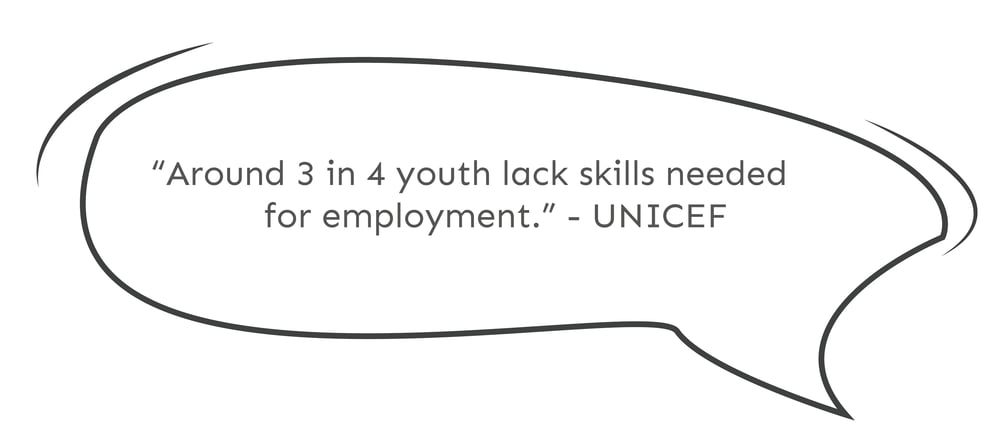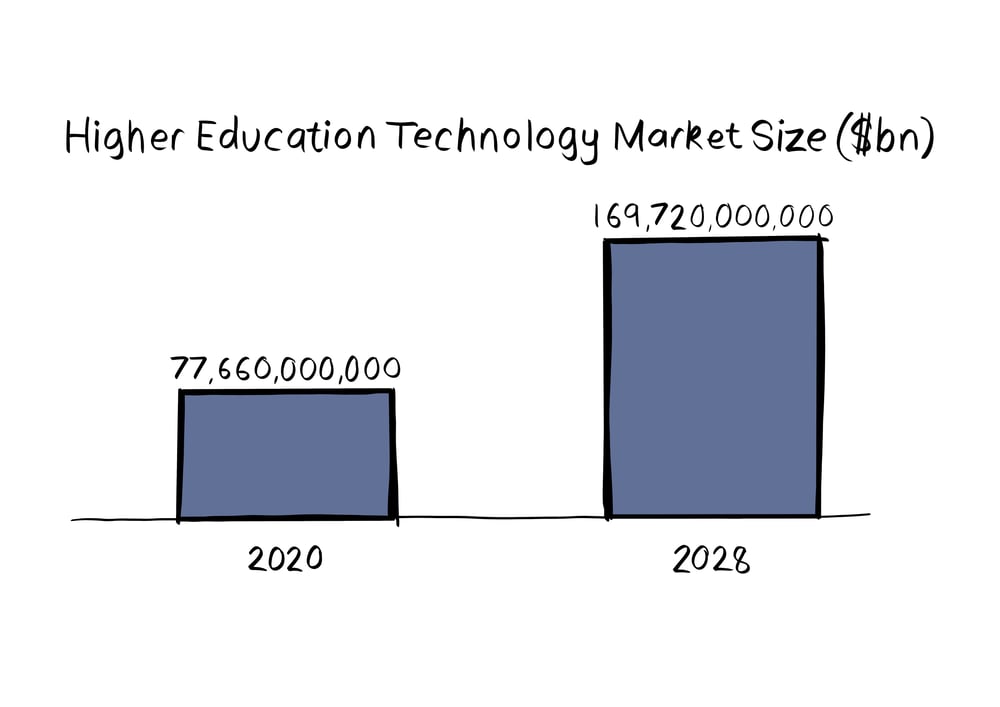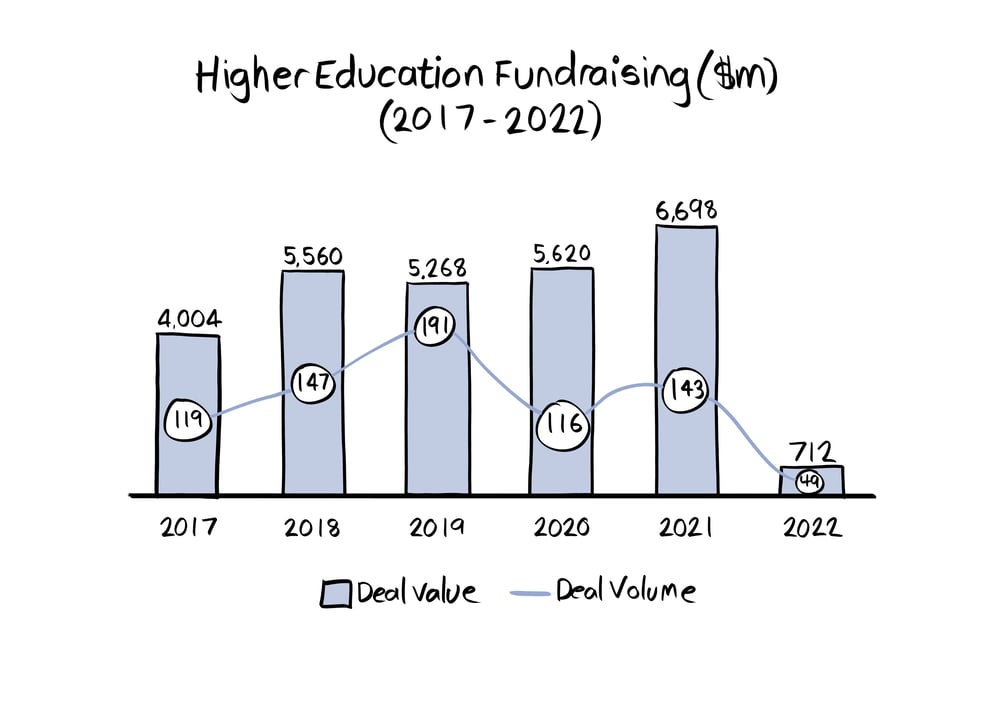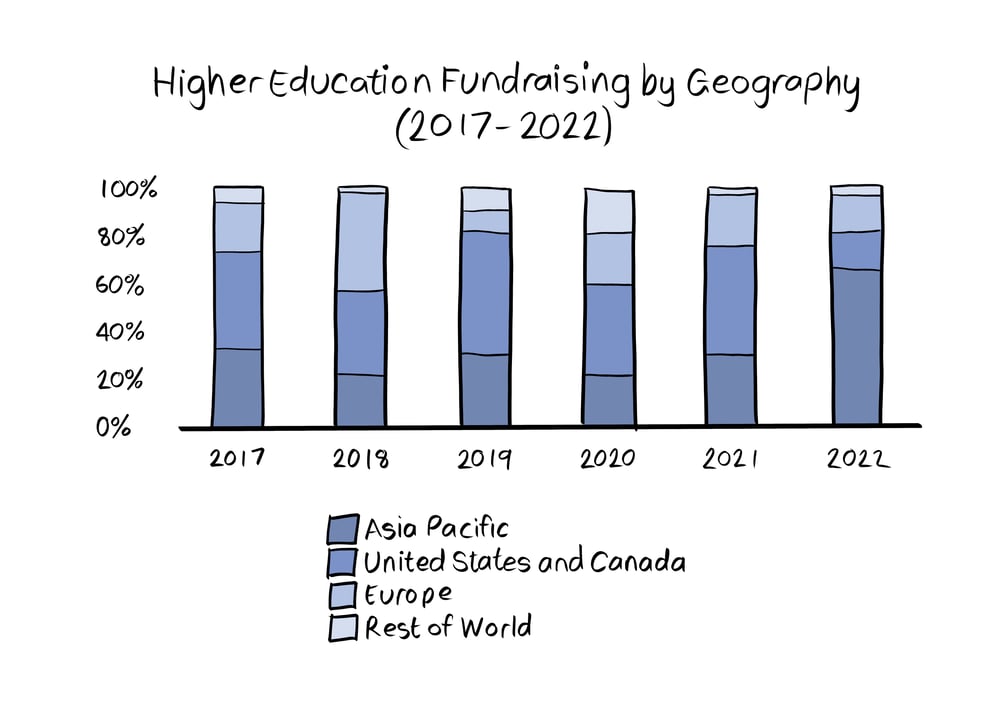|
|
|
 |
 |
|
This month's X Report focuses on leveraging EdTech to help prepare young people for the world of work. We also share key takeaways from senior leaders on how to successfully scale a business globally, and explore the higher education landscape. Each month we share a snapshot of key trends, showcase the stars of today and tomorrow, offer our insight on mergers, acquisitions and fundraising, as well as providing some further food for thought.
|
 |
 |
 |
|
EdTech As the Great Equalizer in Preparing for the World of Work: Lessons from the Teach For All Network
Tarek Chehidi, Global Head, Future of Work and Public Sector at Teach For All
Across 150 countries, a third of the youth surveyed by UNICEF in 2020 said their education is not preparing them with the skills they need to get jobs. Additionally, students from disadvantaged backgrounds are less likely to have access to career development activities—a disparity that further magnifies gaps and inequities.
EdTech has the potential to be the force that drives a more equitable workplace in the future. One that prioritizes providing a career pathway for those who have been historically underrepresented and left behind. It has the power to provide young people in underserved areas with high-quality training.
School closures due to COVID-19 spurred a global experiment where millions of students, in a variety of contexts, had to turn to technology to continue learning. Across Teach For All, a global network of 60 independent organizations working to advance educational equity in their countries, we saw a range of innovations from teachers who created high and low-tech solutions. Through the lens of the last two years, we’ve identified three lessons that can pave the way for leveraging EdTech to upskill young people to access the future of work:
For EdTech to succeed in training the future labour force, we need to develop student leadership early on.
Students who have learned the skills to learn and work independently are best equipped for distance learning, as well as the world of work. Through adopting a learner-centered approach to teaching, and delivering flexible learning experiences, teachers can show students how to learn, giving them agency and confidence to figure out which schedules and resources they need.
Online education must be delivered through context-adapted technologies.
Developing and delivering educational content through context-adapted technologies, and which take into account the needs of the learner, can teach out-of-school learners to develop the skills needed to access the labour market.
In 2020, Ogun State government recruited Teach For Nigeria teachers to teach both on the radio and live on TV while schools were closed, providing education access to millions of children during school closures. This inspired Teach For Nigeria to also launch the Radio School Program, and has also informed Enseña Chile’s Radio School. With schools reopening, the government plans to continue these programs, to both supplement what students are taught in school, and to reach children who are out of school so they can continue to learn and develop the skills that will allow them to access opportunities.
Technology-enabled teaching makes it possible to personalise learning, and to connect learners with opportunities they wouldn’t have accessed otherwise.
When teachers develop lessons for online use, they allow students to adapt their learning to their needs and personalise how and when they learn. This also helps students to learn at their own pace and connect their education to their aspirations. A Teach For Romania teacher who had been using field trips as an essential part of her students' exposure to the world, leverages technology to explore places her students could not have visited in person. She secured enough devices for all of her students to be able to virtually visit a black hole with the European Space Agency, Google in California, and many more places. These visits exposed her students to new ideas and careers, and brought scientists and innovators from all over the world into their classroom.
Now, more than ever, we need to ensure that education is equipping students with the skills and experiences needed to secure and succeed in careers that enable them to thrive in a changing world. Learn more about how Teach For All is working to bridge education and the world of work.

|
 |
 |
 |
|
EdTechX Panel Spotlight - Scaling Internationally
Shared Experiences from EdTech Leaders
Startup teams attending the EdTechX Summit in June this year were given the opportunity to learn from senior leaders behind three global success stories in EdTech, as they shared tips and tricks on how to successfully scale a business globally. Laura Warnier, Chief Growth Officer at GoStudent, Cicy Ding, Co-Founder of WuKong Education Group and Meti Basiri, Co-Founder of ApplyBoard joined EdTech consultant, Jonathan Viner for this enlightening session.
We have pulled together some of the key takeaways below.
Hire the right people who share the same vision and value
This was the overarching message from the panellists when asked how they drive growth. Companies should look to recruit skilled problem solvers aligned to the company’s mission and values, people who are ambitious and competitive but also collaborative. Meti Basiri of ApplyBoard advocates the ‘Three Ps’ - People. Process. Persistence. “You need the right people in the right seat. You need the right processes and the persistence and passion behind what you do,” he said.
Have a culturally diverse team
When entering new markets, having a diverse team with international backgrounds is hugely beneficial. This enables a deeper understanding of target markets and cultures while diversifying perspectives and ideas that foster innovation. ‘Work hard. Play hard’, said Laura Warnier from EdTechX Scaleup Award winner, GoStudent. In her experience, innovation happens outside of the daily work environment through collaboration between colleagues of different backgrounds, competences and expertise. She added that a culturally diverse and multi-lingual team is also an advantage when recruiting localized teams across different countries.
Play to your strengths
When deciding which markets to target, one approach, initially, can be to base this on internal resources and strengths, such as language and culture knowledge – it’s easier to launch a product in a language you are confident in or a culture you are familiar with. Other considerations might also include where the highest spend on education is or where there is the strongest appetite for your product. As the company begins to expand, a more structured and sustainable growth strategy can be implemented.
Centralise all core functions to reduce costs
Centralising the core company operations enables companies to manage global market costs more effectively, explained Cicy Ding of Wukong Education. Once a successful recipe has been established for the core product, it can then be duplicated in other countries by means of localised teams without disregarding local cultures.
Listen to your employees and customers
Continuously adapt and upgrade your product according to what your customers and employees are telling you. Not only does this approach help with finding product market-fit, it creates a high renewal and referral rate and subsequently low customer acquisition costs leading to more sustainable growth.
Watch the full panel session recording here*
Over the next few editions of the X Report, we will be sharing more session highlights from the previous EdTechX summit, which occurred on the 23rd June.
*To access the recorded sessions, registered ticket holders can log in using their registered email address. Non-ticket holders can purchase the 2022 OD Content Pass to access all the session recordings from the 2022 EdTechX Summit.

|
 |
 |
 |
 |
 |
 |
 |
 |
 |
 |
 |
 |
 |
 |
 |
 |
 |
 |
| M&A Activity > |
|
|
|
| Significant Fundraising Activity > |
|
|
 |
 |
|
Industry Analysis – EdTech in Higher Education
Key Points
Modern technology is rapidly transforming the higher education landscape. The technological advancements of the 1980s and 1990s had an impact on every aspect of higher education, significantly altering academic administration as well as the instructional process. Now, powerful forces are pushing for the adoption of even newer modern technologies in higher education – technologies that are removing the spatial and temporal barriers to education and are expanding the reach of colleges and universities.

With the world brought to a halt by the pandemic, many educational institutions were forced to shut temporarily. It is estimated that more than 220 million students were affected globally. While enrolments and admissions suffered as a result, the pandemic certainly became one of the powerful forces that pushed the adoption of technology, and has subsequently strengthened the online platform and distance learning programmes for postsecondary studies. With universities often seeking help from tech giants as they combine theory and technology to create the best learning experience for students, the higher education technology market is expected to reach $169.7bn in 2028, up from $77.7bn in 2020 which represents a CAGR of more than 10%.
While life on campus has largely returned to normal, new McKinsey research shows that both students and faculty are eager to continue using new classroom learning technologies adopted during the pandemic. In a November 2021 study, McKinsey found that various classroom technologies (including classroom interactions, classroom exercises, connectivity and community building, group work, AR/VR, AI-adaptive course delivery, machine learning-powered teaching assistants and student progress monitoring) experienced 19% growth in adoption and enjoy positive perceptions among students and faculty alike. Technologies that facilitate connectivity and community building, such as discussion platforms and virtual study groups, saw the greatest increase in use (49%) followed by group work tools (29%).

The enthusiasm for learning technology from students and faculty is mirrored by investors, with higher education fundraising increasing steadily year on year between 2017 and 2021, reaching more than $6.5bn last year. Of particular interest is that in 2020, fundraising eclipsed the levels seen in 2019 despite the onset of the pandemic – evidence of clear investor interest in the vertical. Geographically, North America and APAC dominate higher education fundraising with the two regions consistently accounting for more than 60% of global higher education fundraising. APAC’s share has grown this year, boosted by India’s burgeoning EdTech scene.

India has seen the highest levels of higher education fundraising globally so far this year with $338m raised across nine funding rounds. The segments within higher education which have attracted investment are varied. The largest round was online higher education platform upGrad’s $225m raise in June, with other notable rounds coming from student recruitment platform LeverageEDU ($22m, March) and student funding platform Propelld ($35m, February).
While dealmaking has unsurprisingly seen a slowdown this year, there is a clear appetite from students and faculty for the classroom technologies being developed by EdTech firms globally. As the dust settles from the pandemic, we can expect clear trends to emerge on which 21st century classroom technologies will become embedded in the higher education space, much like the technological advancements of the 1980s and 1990s that have embedded themselves in academic administration and instruction.
|
 |
 |
|
|
|
|
|
|
|